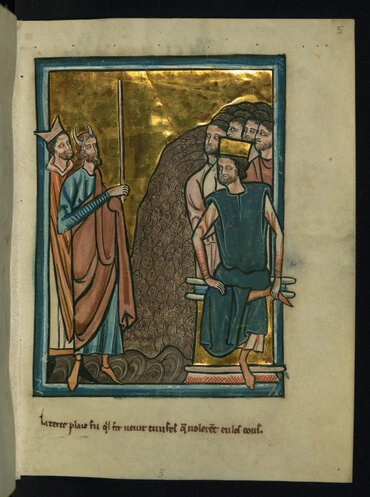აარონი

მოგვიანებით, როდესაც აარონმა თავისი საზეიმო სამოსი ჩაიცვა (იხ. ლევიანების თავები) 8, 9იგი მას ინაუგურაცია ჩაუტარეს ისრაელის მღვდელმთავრის კაბინეტში. ამ როლში, აარონი წარმოადგენს უფალს, როგორც ღვთიური სიკეთისაკენ, ხოლო მოსე წარმოადგენს უფალს, როგორც ღვთიური ჭეშმარიტებას. მოთხრობის პირველ ნაწილში მოსე წარმოადგენს სიტყვას, როგორც ეს სინამდვილეშია, როგორც ეს ზეცაშია გაგებული და აარონი წარმოადგენს სიტყვას მისი გარეგანი გაგებით, როგორც ეს სამყაროში ესმის ხალხის მიერ. ამიტომაც ის საუბრობს მოსესთვის და უფალი ამბობს მასზე "ის შენთვის პირი იქნება, შენ კი ღვთის წინაშე იქნები". (გამოსვლა 4:16). აარონი მოსეს ძმა იყო. ის სიმბოლურად ორ რამეს ასახელებს, ერთი გამოსვლის პირველი ნაწილის განმავლობაში, როდესაც ის იყო მოსეს სპიკერი, ხოლო მეორე - კარავების აშენების შემდეგ და მას ინაუგურაცია ჩაუტარეს, როგორც მღვდელმთავარმა.
(რეკომენდაციები: არკანა კოლესტია6998, არკანა კოლესტია9806, არკანა კოლესტია9936, 10397; გამოსვლა4:14, 28:1, 32:1; ლევიანნი8, 9)






